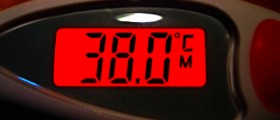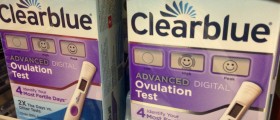
The most popular fertility monitoring system, the ClearBlue Easy Fertility Monitor, is extremely useful for timing intercourse when women have long periods, but not as useful for women who have fast or irregular periods. Women who have a period of less than 21 days simply won't start using the ClearBlue system soon enough after menstruation to determine the right time to have intercourse. For women who have short periods or irregular periods, another technique is recommended.
A temperature monitor, such as the Optimus Petit Sophia Fertility Monitor, is probably a better idea. The idea behind tracking basal body temperature is that as a woman's body is getting ready for conception it gets warmer and stays warmer after ovulation, through the luteal phase, until the next menstrual period. Body temperature then falls and the whole cycle starts over again. Instead of measuring hormone levels - which may not exactly measure optimum fertility, since some women ovulate a little sooner or a little later than hormone levels would suggest - simply noting when basal body temperature peaks, that is, when it is not getting higher, is a good indication of the best time for intercourse.
Not only is this method of fertility testing much less expensive than using kits that require expensive urine test strips, it also measures faster or shorter periods without any needed adjustments. It takes a little longer to use this method - 3 to 5 minutes a day instead of 2 - but it works well if it is applied consistently. That means taking temperature at the same time of day every day, after getting a full night's sleep. Even women who do not have fast, irregular periods sometimes have periods that are a little longer or a little shorter when they are under stress, when they are not able to get enough rest, or when they have an infection. Most gynecologists consider a period of 25 to 35 days to be normal. If you are trying to conceive, however, the same techniques that apply to fast, irregular periods also help women who are just experiencing a slightly shorter or slightly longer period. Timing conception is always helpful to couples who are trying to conceive.

















Your thoughts on this
Loading...